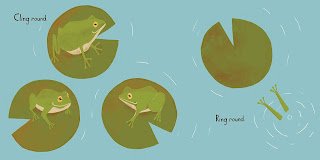Jump at the Sun: The True Life Tale of Unstoppable Storycatcher Zora Neale Hurston
Written by Alicia D. Williams and
illustrated by Jacqueline Alcantara
Athenium Books for Young Readers,
2021
Alicia D. Williams has written a lively
biography that will make young people curious about Zora Neale Hurston, an African
American writer of the 1920s and 1930s.
Also an
anthropologist, Hurston was interested in folk tales. Williams, a storyteller
herself, tells Zora’s story using colorful, folksy language.
“Jump
at the Sun” begins when Zora is a child in Eatonville, FL. Williams writes that
Zora was “attracted to tales like mosquitoes to skin.” She liked to listen to
townsfolk swap stories at the general store.
She made dolls from a bar of soap and ears of corn, then she told stories about her characters. She enjoyed telling stories to anyone who would listen.
Unfortunately,
her mother grew sick and died when Zora was still a child. Her father shipped
her off to boarding school. Zora was happy enough because she enjoyed school.
But
then her father remarried a woman who “was stingier than a peacock.” School
fees went unpaid, and Zora had to come home.
Zora
said, “The walls were gummy with gloom.” Her little brothers were dressed in
ragged, dirty clothes. She was angry at her stepmother and the two of them didn’t
get along. Finally, when she was 14, her stepmother threw her out.
She
stayed with friends and tried to earn a living working, but she was better at
storytelling than holding down a job. For twelve years, she went from job to
job. She moved from town to town, and was in and out of schools.
In Baltimore, twenty-six-year-olds
couldn’t go to public school for free, so Zora said she was 16. She stayed
there for two years and graduated. Then she got into Howard University. She was
in the literary club and wrote for their magazine. She met one of her favorite
authors, W.E.B. DuBois.
Then she decided she’d like to be a writer, too. She got a typewriter and began writing stories. She left school to go to New York City, where she met other writers. She sent stories to writing contests and won many awards.
Bernard College offered her a scholarship and friends also helped her. For her last semester, she traveled through the south collecting Negro folklore. Folklore includes stories and beliefs passed down from generation to generation, like the tales Zora listened to as a girl at the general store.
Even after she graduated, Zora kept collecting tales. She traveled all over the South and even to Haiti and the Bahamas gathering folklore. Then she settled in Florida and began typing up her stories in books. She also wrote her own stories.
Jacqueline Alcantara used markers, gouache, and Photoshop to create the lively, colorful illustrations for this biography. She details them with snippets of dialogue and storytelling in speech bubbles.
At the back of the book, Williams
offers more background about Hurston in an author’s note and lists additional
reading including two books for children, “The Skull Talks Back: and Other
Haunting Tales,” and “Lies and Other Tall Tales,” both by Hurston and Joyce
Carol Thomas.
About the Author
Alicia D. Williams is the author of “Genesis Begins Again,” which won many awards including the Coretta Scott King – John Steptoe Award for New Talent. She graduated with an MFA from Hamline University. She is an oral storyteller in the African American tradition and a school teacher in Charlotte, N.C.
About the Illustrator
Jacqueline Alcantara is the illustrator of several picture books, including “Freedom Soup” and the critically acclaimed “The Field.” Her favorite days are spent drawing, painting, writing, and walking her dog. In 2016, she was awarded the inaugural We Need Diverse Books Illustrator mentorship. Visit her at JacquelineAlcantara.com.














































